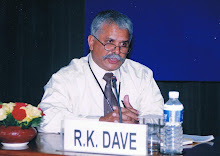Genesis of ICT enabled Gujarat State Public Grievance Redressal system
– Part I
Tele-Fariyad (2002)
Chief Minister’s Call Center for Public Grievance Management
Introduction:
Everyone interacts with the
Government on day-to-day basis for various services. However, not all - accessing
Government may get satisfied and it is very common that there remain
un-resolved public grievances.
In the year 2002 – that time Chief Minister (CM) expressed his concern about unsolved grievances of the
many people leaving in remote areas in the state. The CM was of the opinion
that - If anyone wants
his voice to be heard in the highest echelons of power, that person, no matter
how small, how weak, how poor, how old, should not be deprived of this
fundamental right. Inspired by the Chief Minister’s thoughts - Advisers
were directed to improvise a system to enable a system allowing aggrieved in state to reach
directly to the CM irrespective of their physical location. He also directed
planners to ensure that for conveying his or her grievance the citizens in the
remotest locations of the State should not spent more than cost of a local
telephone call.
A ICT based service by name of “Tele-Fariad”
was conceived and developed keeping following into consideration
(1) Common citizen in any corner
of the state should be able to directly deposit his or her
Grievance to the highest
administrative office in the state,
(2) Depositing complaint should
not cost more than a local telephone call charge to the depositor,
(3) the complainant should get a
feeling of seriousness of the administration to solve the
Public grievances
(4) The process should be web
enables and should work on the Gujarat State Wide Area Network.
Concept
GSWAN (Gujarat State Wide Area
Network) backbone, which was already in place at that time (2002) - connecting 25
districts and 225 talukas in the State with a capital city of Gandhinagar, was
used as communication backbone for Tele-Fariyad service. Each district Wide
Area Network node had remote access server. The original complains were recorded
in the district voice mailbox and for that necessary arrangements were made to
receive telephone calls from jurisdiction at the district GSWAN node and
transmit it further using the stored and forwarded mechanism. The mechanism was
near to online as a complain stored in the local computer node through a
computer to telephone interface card will reach to the agents sitting in the
CM’s Office at Gandhinagar in 7 to 9 minutes for further processing.
Technical Details
- Component used – CTI 4 port dialogic card,
application software for compressing voice mail WAV file into MP3
- Compressed file and transmitting to the designated
mail box in the CM’s Office. A web based complains submission form for the
agent sitting in CM’s Office.
- A feedback mechanism through intranet mail system
- Single Grievance reporting number for the State:
Government of India, Ministry of Communication was requested to allot a 4
digit common number, which can be used across the state for CM’s grievance
call center, Ministry of Communication allotted 1505 on 22 Jan 2002 for this purpose. The Tele-Fariyad service
was made open at three districts initially and scaled to cover whole state
later.
Benefits
derived out of Tele-Fariyad (TF)
(1) provided Easy-Grievance
System for Public
(2) Allowed Public to Register
their Grievance by just making a call
(3) Grievances from any remote
area of the State could be registered easily
(4) Availability of system for all
24 hours and all 365 days a year
(5) Eliminated human factor to a
large extent while registering grievance
(6) Facilitated
De-centralization at District Level
(7) Enhanced “vigilance keeping
capabilities” of the Government Machinery by receiving grievances from citizens
directly at the highest level.
Functioning of Tele-Fariyad (TF):
(1) Aggrieved would dial a four
digit telephone Numbers provided to register their grievances
(2) Aggrieved would listen to a “Welcome
Message of Hon’ble CM” and he/she would record grievance after hearing the Beep.
(3) The call is recorded on the
Server in the form of a sound file & forwarded by mail to the TF E-mail
Addresses immediately.
(4) The above e-mails are
downloaded on the Computers operational at TF Center.
(5) The TF Agents (Data Entry
Operators) listen to the voice mails & transcript message in Gujarati language
in a software application developed by NIC.
(6) Based on the jurisdiction
(physical and subject wise) relevant collector’s Office & secretary are provided
with the grievances details for taking appropriate action. They can also view
the grievances by logging into the application.
(7) The Collector Office updates
the status of the grievance in the Web Application and informs the aggrieved
regarding the action taken by them.
(8) CM Office monitors the
status of the registered grievances.
Outcome & Effects
The tele fariyad was a great
success. 70 % of the grievances use to get resolved within 30 days from the
date of reporting. People were happy to have a facility directly connecting
them with the highest level (CM) in the state.
Next Step - The Chief Minister was very happy with the
response, acceptance, and performance of tele-fariyad. But this was just
beginning – CM wanted a more effective technology driven solution which is
“live and spontaneous” in resolving most complex issues / public grievances which were pending for longer time and could not be concluded due to various reasons.
SWAGAT – a “real time technology driven grievance
redressed system” was planned, designed, and implemented under direct
guidance from that time Chief Minster in the state. For more information - see my
next blog on SWAGAT.


